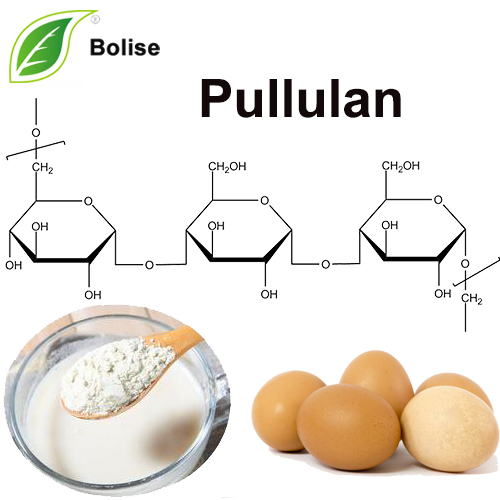Pullulan is applied to egg Preservation
Pullulan is an extracellular water-soluble mucopolysaccharide similar to dextran and xanthan gum produced by fermentation of Aureobasidium pullulans, which was found as a special microbial polysaccharide in 1938 by R. Bauer. Pullulan is a polysaccharide polymer composed of maltotriose units, also known as α-1,4-; α-1,6-glucan. The three glucose units in the maltotriose are linked by alpha-1,4 glycosidic linkages, while the continuous maltotriose units are linked to each other by alpha-1,6 glycosidic linkages. Pullulan is made from starch by the fungus Aureobasidium pullulans. It is mainly used to resist drying and predation. The existence of this polysaccharide also promotes the diffusion of molecules into and out of the cell. Soluble or sprayed eggs in the aqueous solution of Pullulan are capable of preventing the egg from being damaged by partial stress, stopping the invasion of microorganisms and air, and keeping the protein egg yolk fresh.

When the eggs are in the insufficient refrigeration conditions, the eggs are preserved through using paraffin or liquid paraffin on the surface of the eggshell, but the effect is not satisfactory. Pullulan or its esterified compounds are used in egg coating materials to extend the shelf life, harden the eggshell, and reduce collision damage at room temperature. Pullulan is edible, and it is easy to wash off with cold and warm water.
If impregnated or sprayed with pullulan, a film layer with a strong adhesion and a smooth surface can be formed on the surface of the eggshell. The film has a thickness of 0.01-0.1mm, which can increase the hardness of the eggshell, prevent local pressure from causing cracks. It can also inhibit the exchange and reaction of water, O2, CO2 and other substances in fruit and eggs, reduce the nutrient loss during storage, and delay the metamorphism of protein and egg yolk so as to preserve it. Pullulan, other hydrophobic substances and natural rubber are formulated into a uniform and stable emulsifier which is stored at 15-25 ° C. In that condition, the edible period of eggs is 5-10 times longer than that without treatment.
more about:What is Pullulan?

 Asia Bio-Pharmaceutical Research Institute
Asia Bio-Pharmaceutical Research Institute Bolise Co., Ltd.
Bolise Co., Ltd.

